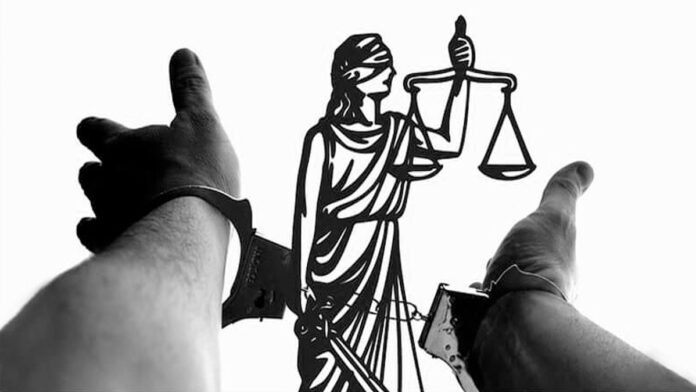The author of this post is Ms. Mili Gupta, LLM Candidate at Institute of Law, Nirma University.
Introduction
Parole, often known as Furlough, is the provisional discharge of a convict prior to the completion of his/her term of imprisonment. The Prison Act, [1894] & The Prisoner Act, [1900] both contain provisions governing Parole & Furlough. They are governed by different regulations in each jurisdiction, with only slight variances. Parole & Furlough is not the same as a sentence revocation [1].
Although Parole & Furlough appears to be similar concepts, they are fundamentally and procedurally distinct. Furlough is a privilege that is awarded on a regular basis, whilst parole is generally awarded for special reasons including death, marriages, medical emergencies, & so forth and is therefore not a right. It was noted in the matter of “Asfaq vs St. Of Rajasthan” as ‘Furlough is awarded in lengthy punishments and might even be awarded merely for the sake of maintaining interaction with relatives, whereas Parole is awarded in short-term imprisonments’.
The objective of both parole & furlough is to assist imprisoned offenders to reintegrate into the community whilst they are still in imprisonment. From the state’s standpoint, parole alleviates part of the burden on overpopulated detention centers while also lowering the expenditures associated with their detention [2].
Several powerful people discover means to get smooth parole/furlough & avoid facing the consequences of their conduct. Many more escape from the criminal justice mechanism after receiving parole or furlough and are never seen again. In layman’s contexts, this is known as “jumping parole”.
MAJOR CAUSES OF MISUSE-
Employing one’s connections is the most typical technique of exploiting parole & furlough. Influential people have been known to obtain parole & furlough relatively quickly and return to their luxurious lifestyles soon after release. Whereas on parole, the culprit in the notorious “Jessica Lal” murder incident was spotted socializing. His justification for seeking parole was the death of his grandma, which actually occurred a year earlier, and the sickness of his mom, which was also revealed to be a fabrication.
There is really no framework in place to maintain the records of prisoners who are released on parole & furlough. Some legal precedents, like the matter of “Dinesh Kumar vs Government of National Capital Territory of Delhi”, ruled that the magnitude of the crime perpetrated can constitute the sole basis in denying parole or furlough, & also that the prisoner’s circumstances and justifications must also be addressed, allows convicts to deceive the court mechanism & jump parole/furlough.
Another crucial concern is a failure of coordination amongst police officials from various regions in instances of interstate movement whilst being on parole. This vulnerability has been exposed on numerous occasions, most recently in the context of a killer imprisoned in Nasik, (Maharashtra), who was granted parole to see family in Uri, (J&K). It wasn’t until three months following his parole had expired that authorities recognized he hadn’t reappeared. The rationale for the breach was discovered to be a failure to notify Jammu & Kashmir officials that a condemned parolee will be arriving in their region.
Parolees frequently perpetrate offenses whilst on parole. For example, in “Saibanna vs St. Of Karnataka”, a prisoner undergoing life imprisonment was awarded parole and discharged for a month, during that time he killed his 2nd wife & child in horrific ways.
SUGGESTIONS-
The most appropriate criteria for determining parole status would be on which takes an individuality perspective. After considering all of the good and bad factors, primarily those criminals who have behaved effectively to the institutional scheme and are no more a danger to the community are released. The concerns of both entities are served in this approach, as the community is protected by restricting the intake of violent convicts who may engage in illegal activities again by holding specific prisoners who are not competent for reunification.
In circumstances involving serious crimes, parole & furlough must be awarded extreme discretion. The statement presented to the officials, which includes the case background and behavior of the offender, must be thoroughly examined. To guarantee that they can choose the best option while not jeopardizing social welfare, decision officials must have a thorough understanding of the offender. The arguments given for seeking parole should also be extensively investigated and validated. The criminal in dispute could also abuse his/her parole or furlough via assaulting witnesses, attempting revenge, or perhaps manipulating with evidence, all of which must be taken into account before their request is approved.
By failure to fulfill their punishment or secure their ability to reintegrate into public, offenders jeopardize the welfare of everybody, especially their own, generating inequity in all places. To bring closure to this phenomenon, initiatives must be conducted to guarantee that the criminal justice mechanism operates effectively and expeditiously, maintaining a ratio amongst social welfare & civil rights of the offender.
Preferred Citation: Mili Gupta, THE MISUSE OF PAROLE & FURLOUGH: AN OVERVIEW , The Criminal and Constitutional Law Blog, Published on 24th August 2021

